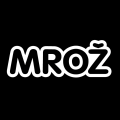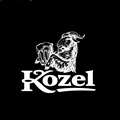Return of the Przewalski’s Horse to Mongolia
The Central Asian Przewalski’s Horse is the very last surviving wild horse species. The world learned of its existence only in 1881 – but less than a hundred years later, at the turn of the 1970s, it had already been driven to extinction in the wild, surviving only in the care of zoological gardens.
Extraordinary credit for the preservation of the Przewalski’s horse goes to Prague Zoo, which in 1959 was charged with managing the international studbook for the species (the first edition was published in 1960), and which has bred over two hundred foals. Under the leadership of the late Prof. Veselovský, a former director of Prague Zoo, we became one of the leading organizers of international transports of Przewalski’s horses back to their original homeland.
The first transport – to China – took place in 1988. Four years later, two transports headed to Mongolia – and still other transports to Mongolia were organized in the following years. At the time, the reintroductions were run mainly by Dutch, German, and Swiss organizations. Prague Zoo joined the wild-horse return project in 1998 and 2000, when it provided four Przewalski’s horses to be sent with international transports to the areas of Takhin Tal and Hustain Nuruu.
A long pause followed, during which international horse transports almost ceased. It seemed that the species was already on the road to recovery – and, consequently, the motivation to embark on such a demanding enterprise had vanished. However, the harsh realities of life in the steppes and semi-deserts of Central Asia have since proved to us that the fight was not over yet. If we want the horses to survive in the wild in the long term, we have to do more than monitor and help their populations (e.g. by providing additional food during especially tough winters) – we also have to enrich their genetic variety by supplying them with ‘new blood’; that is, by repeatedly releasing individuals born in human care. And so, international transports having petered out, Prague Zoo resolved to take on the organization of transports on its own – the first zoological garden in the world to do so.
Partnering with the Czech Army, we transported three to four horses to Mongolia each year between 2011 and 2015 – 18 mares and one stallion in total. They were taken to the Khomyn Tal reserve and the Gobi B national park, where, following acclimation, they joined the wild herds. The success of the endeavor can be judged by the fact that only a year after their arrival, some of the mares were already raising their own foals.
Where do our funds go?
The funds collected in the ‘Return of the Wild Horses’ fundraising account are used by Prague Zoo to finance Przewalski’s horse transports to Mongolia and to support the management and the guards at the Gobi B National Park. Financial and development aid are also provided by the Czech Development Agency, with which Prague Zoo collaborates in Mongolia. Thanks to all this assistance, the Gobi B National Park management now has off-road vehicles, GPS navigation, increased radio network coverage in the national park, and two new guardhouses, as well as new garages and hay barns.
Since a crucial ingredient in nature conservation is the involvement of the people living around a protected area, Prague Zoo also works with the Czech Development Agency to help the local communities and to carry out awareness-raising activities (e.g. through a new school eco-club, which was founded, as part of our project, in the little town of Bij situated near the national park).








